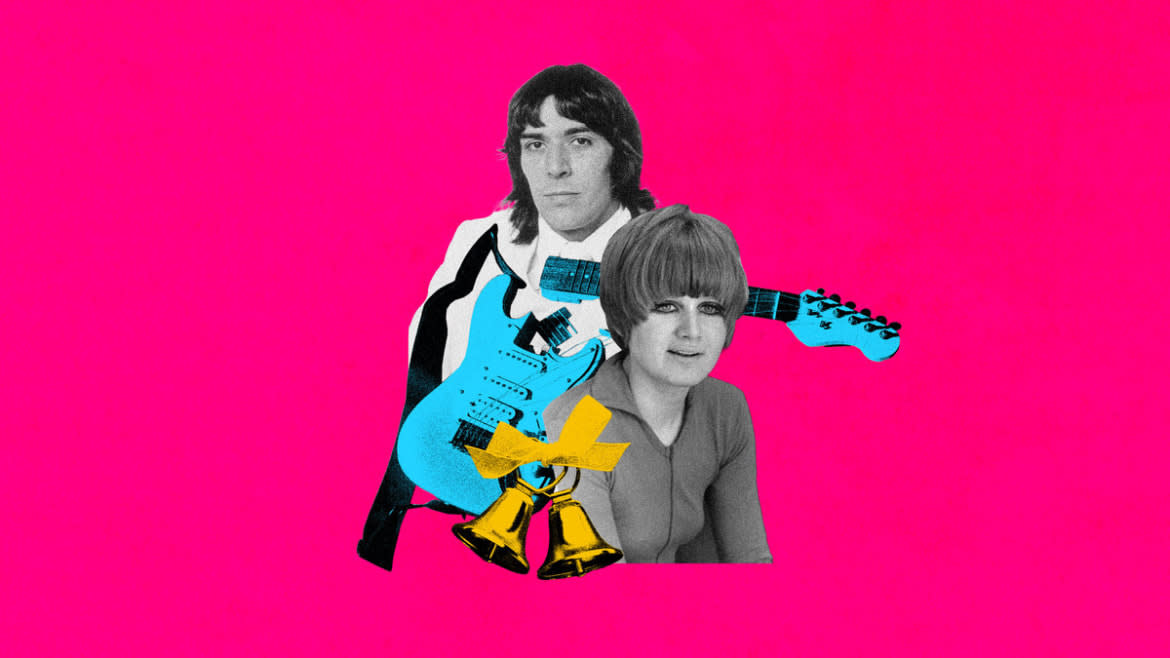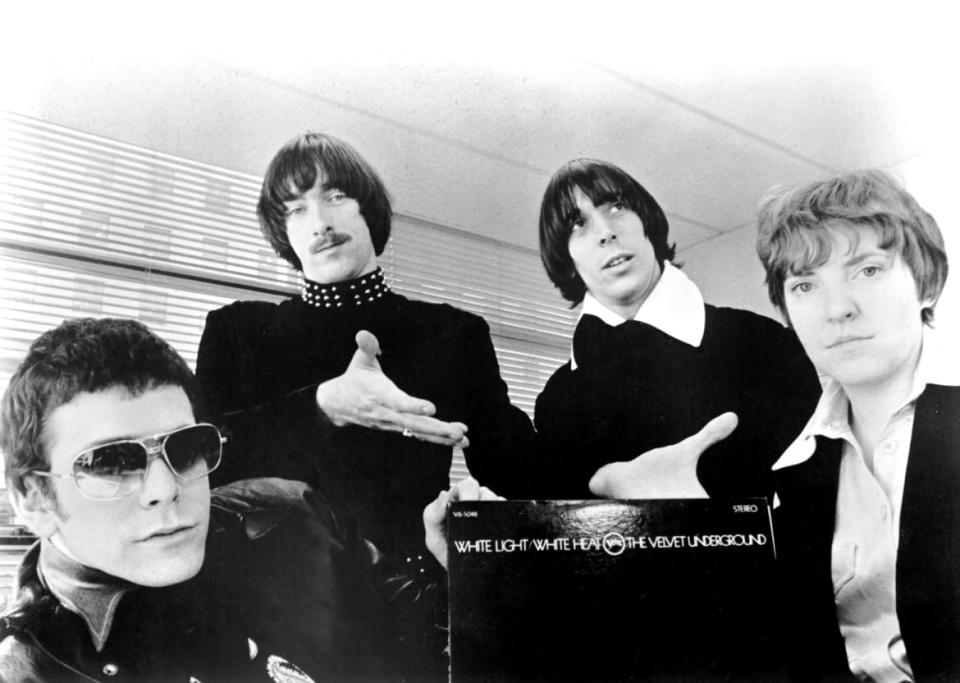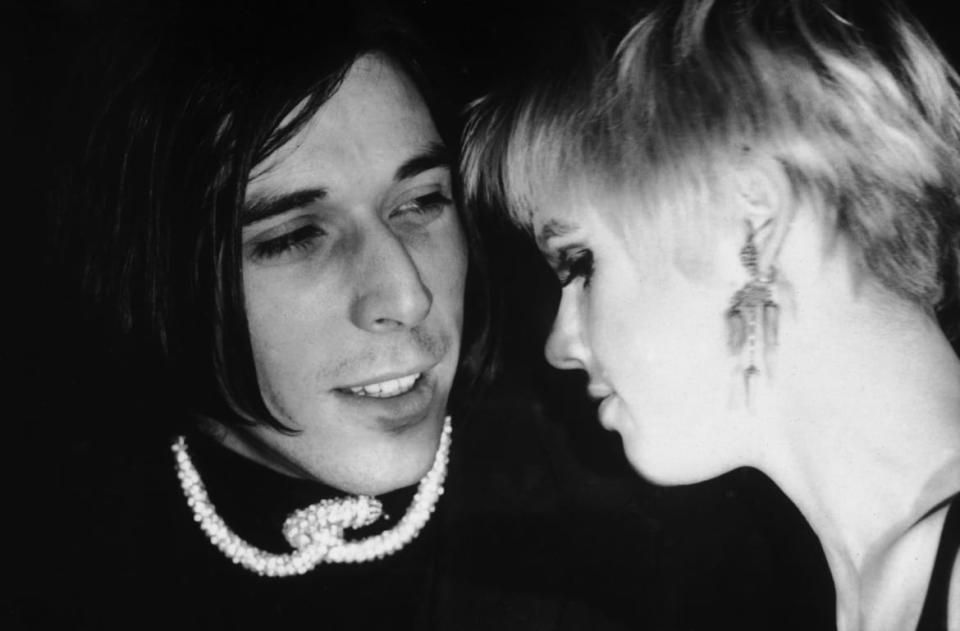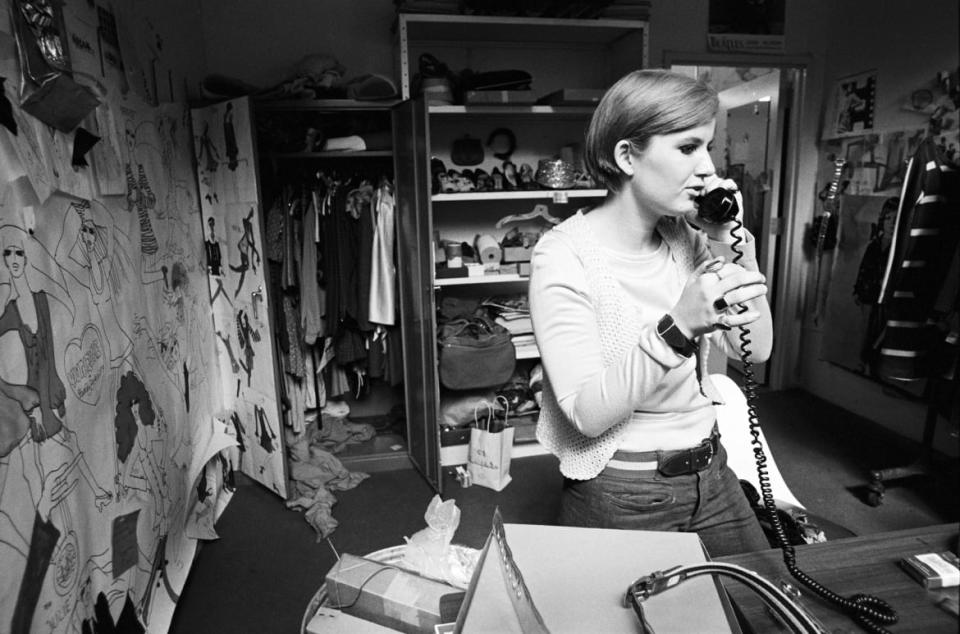The Marriage That Broke Up the Velvet Underground

- Oops!Something went wrong.Please try again later.
- Oops!Something went wrong.Please try again later.
- Oops!Something went wrong.Please try again later.
In honor of Betsey Johnson’s 81st birthday, which was on Aug. 10, I present the unknown story of her wedding to the Velvet Underground’s John Cale in 1968 at NYC’s City Hall, which is considered by many to be the final nail in the coffin of the partnership of Lou Reed and John Cale.
It was only 22 years later, after Andy Warhol died on Feb. 22, 1987, that Cale and Reed reunited to record their stunning masterpiece honoring Warhol, Songs for Drella, staying together for a Velvet Underground world tour. Then, as quickly as they had reunited, they dissolved their working partnership and went their separate ways again.
Betsey Johnson changed women’s fashion forever and John Cale and Lou Reed’s Velvet Underground spawned so many different musical genres that the votes are still being tabulated: Punk, Glam, Goth, Avant-Guard, Synth, Prog Rock, etc., etc. It was not only the stature of these two cultural icons that gets my vote for “Hipster Wedding of the Century,” but also for the glamorous unlikelihood of the pairing.
“I kinda got stuck being a threat to Lou Reed,” Betsey laughed as she told me about the wedding, in an interview we did in 1996 with Gillian McCain. “I mean Lou really did not like the idea of John and I getting married AT ALL!”

Lou Reed, Sterling Morrison, John Cale and Maureen “Moe” Tucker of the rock and roll band The Velvet Underground, pose for a portrait in circa 1969.
“At the time I met [Betsey],” John Cale told Victor Bockris for Cale’s overlooked, brilliant autobiography, What’s Welsh for Zen, “she was designing costumes for the Underground movie, Ciao! Manhattan, starring Edie Sedgwick. Those clothes were spooky as hell. They were for somebody who’d been up too long. And sure enough Betsey took amphetamines every day—diet pills, black bombers. She was a little overweight and very sensitive about it, and she would sit up all night making clothes.”
“I was always five to ten to fifteen pounds overweight,” Betsey confessed to me, “and I’d get on the train to go way out to some strange little doctor in Forest Hills and get this little bottle of drops. But I was good, I only did my two drops before breakfast, and my two drops at lunch, but basically, I was on the old speed stuff.”
There was a lot more to Cale and Johnson’s connection besides drugs. As Cale admitted to Victor Bockris, “I liked Betsey because of the energy she had. Here was somebody who was really alive, a sparkling personality, and also generous. She was doing in fashion what we were doing in music.”
While Betsey was hanging around Andy Warhol’s Factory, designing clothes for the Velvet Underground, it was bassist and rhythm guitar player Sterling Morrison who first caught her eye.
“I don’t know how I ended up going out with Sterling,” Betsey shook her head. “All I remember was they called from the Factory and Andy had to do a shoot with Edie Sedgwick and Edie wanted to wear silver. They knew I was making silver and so I went to a roof somewhere and dropped off the clothes and I met John Cale, but first I had a little thing with Sterling.
“Sterling wanted velvet with studs, and Mo wanted velvet with studs and a great collar. Lou Reed said I made a great crotch. I don’t know why I was with Sterling, but then I realized that I really loved John.”
“Sterling was pissed off at me,” Cale was quoted in What’s Welsh for Zen, “because he thought [Betsey] was his girlfriend. To me his involvement with Betsey was minor, because Sterling’s reason for doing gigs was to get the tillies—that’s the word he used, meaning groupies. After a gig he would go marching into the hall and start reconnoitering.”

John Cale and Edie Sedgwick at the New York Society for Clinical Psychiatry annual dinner, The Delmonico Hotel, New York, 13th January 1966.
Betsey confessed that it was Cale’s request that she make a pair of gloves for him that he could set on fire while he played his instruments that caused her to fall in love with him.
“I just really fell in love with John when he started telling me what he wanted me to do for him in terms of a costume,” Betsey said, “That’s how he wanted to play with his hands on fire, with some kind of gloves that could be on fire, and I just thought, ‘WHOOAA!’”
“I was just very attracted to people over the edge,” Betsey continued, “or on the edge, you know?”
For John Cale, Betsey Johnson was his new collaborator, someone who understood his penchant for musical and visual nihilism. As Cale would tell Bockris, “Betsey took me out of the band instantly. [And] Lou pinned this as a betrayal.”
The friction had always been there between John Cale and Lou Reed, Betsey claimed, as Lou was coming from the world of rock & roll, while John was coming from the world of classical music. This hostile opposition culminated on vinyl when the Velvets recorded their second album, White Light/White Heat, recorded between Sept. 4–16, 1967; a masterpiece of outright warfare between the two musicians.
“There was something always threatening between the two of them,” Betsey claimed. “As great as they were for each other, there was always a tension; a competition. John would think, “Oh I wish I could write a hit song,’ but the frustration of each one of them holding their own—I mean John’s trying to do his thing, and Lou trying to do his thing—I could feel it wasn’t gonna last, right from the very beginning.”
By the time the album was released in January of 1968, Cale had moved even further way from Reed, spending Christmas 1967 in the Virgin Islands with Betsey, then flying to Spain with her for an extended vacation. When Cale returned to New York it was time to tour for White Light/White Heat, beginning in Vancouver, British Columbia. It was there that Cale fell off the 15-foot stage and broke his wrist and was forced to perform with a cast on his hand.
If that wasn’t bad enough, their new record received bad reviews and no airplay.
The Velvet Underground was going nowhere fast. Still, John Cale had Betsey Johnson to fall back on. “When Betsey came and joined us in San Francisco or Los Angeles, she would immediately move me to a better hotel,” Cale stated. “I tried not to do that because I knew what it would do to the band, but I wouldn’t try that hard, because Sterling was doing it. He had gone off with a tillie. [Our manager] Sesnick was happy because he didn’t have to pay for the extra hotel room. Anyway, Betsey really did bring me out of my shell.”
“We were such opposites,” Betsey confessed, “I grew up so straight, in WASP-y Wethersfield, Connecticut, that used to be this little farmland, like one of the oldest towns in Connecticut. I was going to a rich private school, and in 1965 I was in college doing my cheerleading and Mademoiselle magazine picked 20 girls, 10 for artistic talent and 10 for literary writing talent, and I won this magazine competition and I got a job in New York for a month. I didn’t get paid, but I worked on the magazine for a month to get your toes in New York City.”
Mademoiselle was so taken with Betsey’s style her one month interning was extended into nine months before she was offered a job designing clothes at Paraphernalia, the hip, trendy clothing store on Madison Avenue—where the Velvet Underground performed for the Go-Go girls dancing in the display windows. It was the time of the “Youthquake,” and Edie Sedgwick became the “It Girl.”
Betsey enjoyed designing affordable clothing, like miniskirts and t-shirts, and used vinyl whenever possible. “You’d spray Windex rather than dry-clean,” she was quoted, “We were into plastic flash synthetics.”

Betsey Johnson talks on the telephone in her studio in New York in 1966.
Her time at Paraphernalia brought her into the orbit of Andy Warhol who was a fan of her work. “I really liked Andy,” Betsy laughed, “but he really had a hard time recognizing my different looks, ha, ha, ha! I’d say, ‘Hi Andy,’ and he’d say, ‘Oh it’s you, Betsey….’
“He’d just always tell me very quietly that he really liked my work,” Betsey admitted, “I mean he read me like a book, as I thought I read him like a book; we were two Leos, very quiet, and he just saw that I was an incredibly hard worker, very determined, and directed, focused, and isolated.”
As John Cale remembered, “When [Betsey] started showing up at all the VU gigs because she could afford to, I really admired her. I think to some extent Betsey was interested in the band because they had a certain hip cachet…”
“I never really hung out at Warhol’s Factory, “Betsey confessed, “or even with the Velvet Underground as a band, except to see their shows, even though Edie was my fitting model for a while. It wasn’t really connected to the scene, because unfortunately I wasn’t really doing drugs.
“Edie would come over to do a little fittings with me,” Betsey continued, “I’d give her some clothes, pay her some money, very simple day-time stuff, but I don’t ever remember a night out with Edie, and the same with Nico. I mean Nico was very sweet, very light, very nice, but there were no deep dark problems to share, because I was just spinning my own wheels, working all the time.”
Ahhh, the innocence of youth, but by 1968 the world had turned ugly. Vietnam. The assassination of Martin Luther King. And the shooting of Andy Warhol by Valerie Solanas. Then, a few days later, Bobby Kennedy was killed, bumping Warhol off the cover of Life magazine.
And, of course, the commercial failure of White Light/White Heat, which so superbly captured the violence and chaos of the times that it remains an audio history of the year 1968.
That’s when Betsey and John decided to get married—in April 1968.
“I can’t remember anything about [John asking me,] ‘Will you marry me,’ I mean, I don’t know how that even happened,” Betsey laughed, blaming her horrendous memory.
“I just remember one funny story when I was about to mail the wedding invitations and John’s turning yellow, “Betsey added, “I called the hospital, and he’s still yellow, but he says, ‘Mail ’em anyway.’ The next thing I know he’s totally over the top with contagious hepatitis, and The Ladies’ Home Journal was furious because they were gonna shoot the wedding.
“Can you believe that The Ladies’ Home Journal, the magazine of togetherness, were gonna shoot the wedding?” Betsey asked, “We figured, ‘Hey why not,’ because they were gonna pay for all the liquor and all the food as long as they could shoot it. So I called the Journal from the hospital and told them, ‘You can’t shoot the wedding because John has hepatitis,’ and they said, ‘No that’s OK, you can still have the wedding, we will shoot the wedding and we’ll strip him in. We’ll take pictures of him when he’s better and we’ll strip him in.’
“I said, ‘No way Jose, that’s not the way to do it.’ Ha, ha, ha!
What Lou Reed Was Really Like: Legs McNeil’s Tribute to the Velvet Underground Legend
“So we went down to City Hall,” Betsey explained, “and I’d made John this beautiful Edwardian, Victorian black crushed velvet suit with all the ruffles, and I made myself like a matching velvet, burgundy, lace-trimmed pant suit. We went to City Hall, and Bunky was my Maid of Honor, I think Sterling Morrison was John’s best man. I know that everybody like Andy and Nico were at our house, at the loft on LaGuardia Place for this little party, but at City Hall it was just Sterling and Bunky, that was it. I go down in this beautiful pant suit, we’d done everything right, the blood test, whole thing, everything’s right, but they send me home because you can’t get married in pants! I mean you’d think, ‘Did those days exist?’
“So anyway,” Betsey concludes, “I went back to City Hall in the tiniest like eight-inch mini-skirt I could find, and we got married.”
As John Cale confessed in his autobiography, “I made her cry on the day of her wedding because I forgot to buy her a corsage.”
“I can’t remember if Lou Reed was at the party,” Betsey struggled with her recall, “I know Sterling and Mo were there, but no Lou. John let me know that Lou was not happy about us getting married. Lou hated me. It’s like there was a Lou camp and a John camp and I, of course, was in the John camp.
“I don’t remember much of me and John together,” Betsey told me, laughing, “I can just remember that he was very upset that I really didn’t like to fuck and watch television at the same time. That was a little hard for me and I think now, ‘Why couldn’t I get over that?’ Ha, ha, ha, but that really bothered me!”
Get the Daily Beast's biggest scoops and scandals delivered right to your inbox. Sign up now.
Stay informed and gain unlimited access to the Daily Beast's unmatched reporting. Subscribe now.

